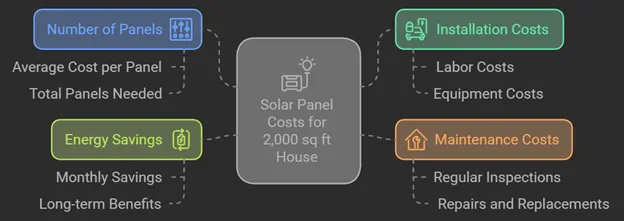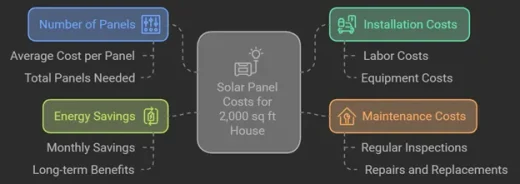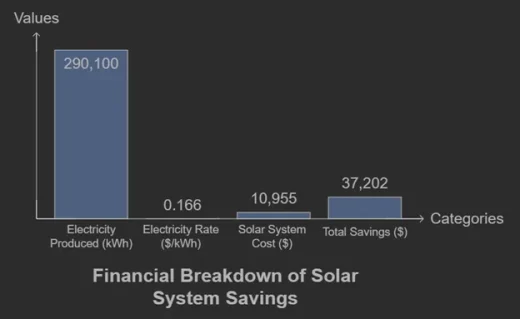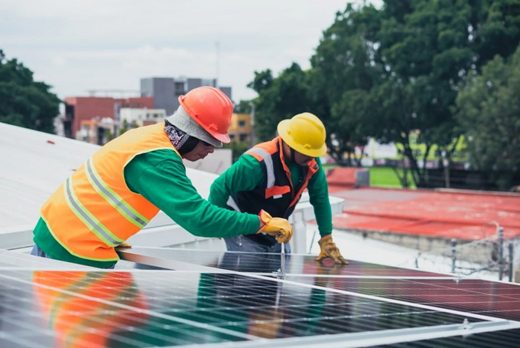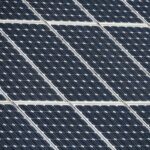How much do solar panels cost for a 2,000 square foot house?, Home power technology advice
How Much Do Solar Panels Cost for a 2,000 Square Foot House?
30 October 2024
With everyone buzzing about green energy, lots of folks are switching to solar power to cut down on their electric bills and do some good for our planet.
If you’ve got a 2,000-square-foot home, you might be wondering about the cost.
Well, setting up solar panels isn’t cheap—it’ll set you back about $15,650 upfront.
But hang on, there’s good news!
With all the tax breaks and incentives, that number could shrink to around $10,955.
And think long-term: you could save a whopping $37,000 over 25 years.
In this guide, I’ve got you covered on how to work out the costs, size your system just right, and get the most bang for your buck with solar.
Key Takeaways
- To calculate the cost of solar panels for a 2,000-square-foot house, start by considering your monthly energy consumption and peak sun hours in your area.
- An average home of this size in the U.S. uses around 967 kWh per month, and you can calculate your system size by dividing this by your area’s peak sun hours.
- Factor in system losses (about 14%) to account for real-world inefficiencies like shading or dust, ensuring you meet your energy needs.
- Once you know your system size, determine how many solar panels you need by dividing it by the panel’s wattage, typically around 300W.
- After tax credits, the total cost of installing solar panels for a 2,000-square-foot house could drop to around $10,955, leading to savings of about $37,202 over 25 years.
How to Calculate the Solar Panels’s Cost for a 2,000 Square Foot House?
- Consider Your Monthly Energy Consumption
Let’s start by figuring out how much electricity your home uses, which is the first step before you even think about the cost of solar panels.
According to the Energy Information Administration, an average 2,000-square-foot home in the U.S. uses about 11,604 kWh of electricity per year.
That breaks down to roughly 967 kWh per month.
But keep in mind, your mileage may vary depending on whether you’re someone who blasts the AC, is always opening the fridge, or has a ton of gadgets plugged in all the time.
To get a clearer picture, it’s a good idea to dig out your recent electricity bills.
These bills will tell you exactly how much power you’re using each month and will be super helpful in determining just how big a solar system you’ll need to meet your needs.
For the sake of our discussion, let’s assume your house uses about 967 kWh per month.
This number is just a starting point to help us figure out what kind of solar setup might be best for your house.
- Find out the Peak Sun Hours in Your Area
So, how much power do your solar panels churn out?
It all hinges on how sunny it is, and let me tell you, that sunlight isn’t always steady—it goes up and down throughout the day.
On some lazy days, the sun might only dish out about 300W/m², but on really bright days, it can rocket up to 1,000W/m² each hour.
Here’s where we get to the juicy part—peak sun hours.
Think of these as the perfect sunny moments when you get that full 1,000W/m².
It’s like the sweet spot for your solar panels because that’s when they’re working hard to power up your place.
So, if you’re thinking about getting solar panels in Massachusetts, you’ll likely have fewer peak sun hours compared to a sunnier state like California.
This means you might need more panels or a bigger system to meet your energy needs.
Say you’re chilling in Los Angeles, where it’s pretty sunny, and you get about 5.83 peak sun hours every day.
That means each day, your panels are set to churn out roughly 5.83 kWh of energy.
Not too shabby, right?
But let’s think bigger—like, whole-month bigger.
If you take those daily peak sun hours and stretch them over 30 days, you’re looking at about 175 peak sun hours each month.
Want to get this down for your spot?
Grab those daily peak hours, toss them into this calculator, and multiply by the days in your month.
- Calculate the Theoretical Size of Your Solar System
Now, let’s dive into how you can work out the best size for your solar system using what you’ve got on hand—your monthly energy use and how much sunshine you’re catching.
Here’s a simple way to break it down:
We use a basic formula to figure this out:
Solar System Size (kW) = Electricity Usage (kWh) / Peak Sun Hours per Month (hrs)
So, if we toss in our numbers:
Solar System Size (kW) = 967 kWh / 175 hrs
This crunches down to a solar system size of about 5.53 kW.
Now, keep in mind, that this number assumes everything is perfect—like no shade, no dust, just endless sunny days.
But, we live in the real world, and things aren’t always ideal.
Your solar panels might face some shade from trees, or maybe they get a little dusty.
All of this can drop their efficiency a bit.
To ensure you’re covered and don’t run short on power, you might want to bump up your numbers a bit to account for these real-world snags.
- Factor in System Losses
Even the best solar panels don’t live in a perfect world—they deal with shadows from trees, dust, and just general inefficiencies that all equipment experiences.
These little hiccups mean your panels won’t always perform at 100%.
So, how do we handle that?
Well, we add a little cushion to our calculations to ensure you’ve got enough power even on the not-so-sunny days.
We call this accounting for system losses, and a good rule of thumb is to add about 14% to your ideal system size to cover these losses.
Here’s how it works with the numbers: If we calculated that a perfect system for your home would be about 5.53 kW, we then multiply that by 1.14 to account for the real-world messiness:
Real Life Solar System Size (kW) = 5.53 kW x 1.14
That gives us about 6.30 kW, which is the size you’d want to aim for.
- Find the Total Number of Solar Panels
Solar panels come with a power rating, telling you how much juice they can pump out, and it’s usually somewhere between 250 watts to 400 watts.
Figuring out how many you need to power your home isn’t too tricky—there’s a simple formula we can use:
Number of Solar Panels = Real Life Solar System Size (kW) / Solar Panel Wattage (kW)
Let’s break it down with our example:
Number of Solar Panels = 6.30 kW / 0.3 kW ≈ 21 panels.
That means you’d round up your rooftop squad to about 21 300-watt panels.
- Estimate the Cost of Solar Panels
Finally, let’s break down the costs.
In the U.S., the average price for solar power is around $2.77 for each watt before you factor in any tax breaks.
Here’s how we figure out the total:
Total Cost = Solar System Size (kW) x Average US Cost ($/W)
So for our example, that looks like:
Total Cost = 5.65 kW x $2.77 = about $15,650 before tax credits.
Now, let’s talk savings with those tax credits, which can knock off about 30% of the cost:
Net Cost = Total Cost x (1 – Tax Credit Percentage)
So you’ll do:
Net Cost = $15,650 x (1 – 0.3) = about $10,955.
That’s the ballpark figure you might be looking at for a cool solar setup on your 2,000-square-foot pad in sunny Los Angeles, after cashing in on those tax perks.
How Much Money Will a Solar System of 2,000 ft Square House Save Me?
A solar panel system for a 2,000-square-foot home will save you about $37,202 over 25 years.
First up, we figure out how much electricity your solar system will produce in its lifetime.
Here’s the simple math:
Total Electricity Produced (kWh) = Electricity Usage (kWh/month) x 25 years x 12 months.
For this example:
Total Electricity Produced (kWh) = 967 kWh/month x 25 years x 12 months = 290,100 kWh.
Now, let’s talk money saved.
We take that total electricity and multiply it by the current average electricity rate in the U.S., which is about $0.166 per kWh.
Subtract the cost of your solar system, and you’ll see your total savings:
Total Savings ($) = Total Electricity Produced (kWh) x Electricity Rate ($/kWh) – Solar System Cost ($).
So, plugging in our numbers:
Total Savings ($) = 290,100 kWh x $0.166/kWh – $10,955 = $37,202.
How Many Panels Are Needed for a 2000 Sq Ft Home?
About 21 solar panels rated at 300W each are needed for a 2000-square-foot home, depending on location and energy usage.
How Many Solar Panels Do I Need to Run a House?
The number varies based on energy consumption but an average home may need between 8-24 solar panels of 400W each to cover all energy needs.
Can We Run AC on a Solar Panel?
You can run air conditioners on solar panels; the number of panels needed depends on the AC’s wattage and operational hours.
How Much Do Solar Panels Cost for a 2000 Square Foot House in Florida?
Solar panels in Florida cost a 2000 sq ft house around $14,809 after tax credits, based on the state’s average rates and incentives.
Conclusion
As promised, we’ve covered everything you need to know about the costs and savings of installing solar panels on a 2,000-square-foot home.
Remember, while the initial investment might seem steep, the potential savings over time are significant—not just in terms of dollars but also in environmental impact.
A pro tip for an extra edge: consider additional state-specific rebates and green energy incentives available in your area to further reduce upfront costs.
Do you still have any questions or concerns about switching to solar energy?
Feel free to reach out or leave a comment below, and we’ll help guide you through your solar journey.
Comments on this guide to How Much Do Solar Panels Cost for a 2,000 Square Foot House? article are welcome.
Use Convert PDF to Word.
Solar Panels Articles
Solar Panels Posts
Before Installing Solar Panels
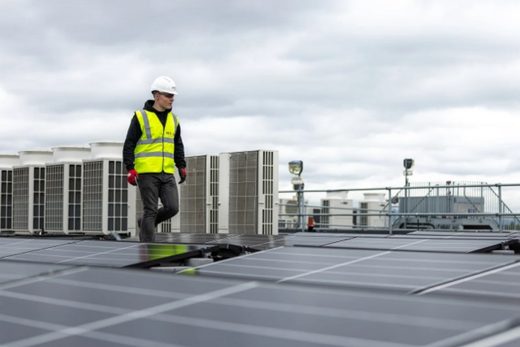
Types of roofing for solar panel installation
Building Articles
Residential Architecture
Comments / photos for the How Much Do Solar Panels Cost for a 2,000 Square Foot House? page welcome.

